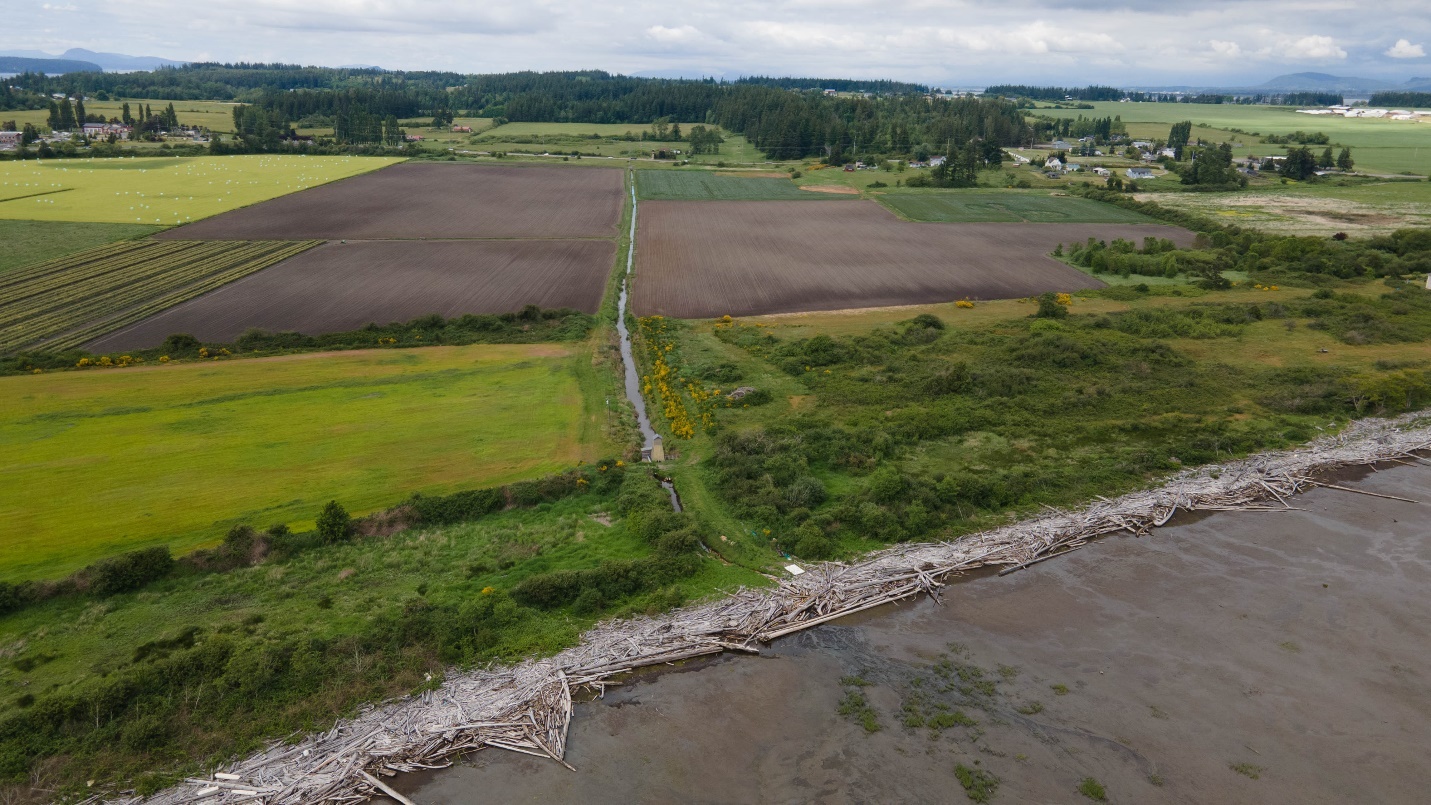
Livingston Bay shoreline. Image courtesy Dawn Pucci.
We are happy to announce we've helped secure nearly $3.4 million in National Coastal Wetlands Conservation grants to protect 237 acres of coastal wetland habitat in Island, Jefferson, and Mason counties.
This year, Washington received the second-highest number of federal wetland conservation grants under the U.S. Fish and Wildlife Service program. Since 1992, we've been successful in helping projects totaling approximately $132 million conserve nearly 15,000 acres of coastal wetlands in the state.
Coastal wetlands often rival tropical rain forests and coral reefs as some of the most diverse, productive ecosystems on the planet. They include estuarine salt marshes as well as freshwater wetlands that extend inland within a watershed.
While only U.S. states and territories can apply for the federal conservation grants, we work closely with our partners in local and Tribal governments and conservation organizations to identify projects and develop wetland restoration and protection proposals for the federal government to consider.
Funded in part through taxes paid on fuel and equipment purchases by recreational anglers and boaters, the federal National Coastal Wetland Conservation grant federal program provides up to $1 million for individual wetland projects.
Here are the Washington projects receiving funding in 2022.
Anderson Creek Wetlands Acquisition and Restoration – Phase 2 ($650,000)
Anderson Creek. Image courtesy John Gussman.
We're working in collaboration with the Northwest Watershed Institute and the Washington Department of Natural Resources to permanently protect and restore 3.6 acres of critical coastal wetland habitat within the Dabob Bay Natural Area in Jefferson County. The project will conserve and restore the last unprotected parcel within Anderson Creek valley. Ecologically diverse, the property includes nationally- and regionally-declining freshwater forested and scrub-shrub wetland types. Restoration include removing roads and a culvert that blocks fish passage to most of Anderson Creek, home to many at-risk species including steelhead and coastal cutthroat trout, Coho salmon, western brook lamprey, as well as many important bird and mammal species.
Discovery Creek and Wetlands Acquisition ($727,000)
Discovery Creek with property and creek highlighted. Image courtesy John Gussman.
Working in partnership with the Northwest Watershed Institute, the project will protect 90 acres along Discovery Creek within the Dabob Bay Natural Area in Jefferson County. It includes preserving the headwaters and wetlands at the upper end of Discovery Creek, a salmon stream and the second largest freshwater system entering Tarboo-Dabob Bay. The new acquisition fills a critical gap since most of the Discovery Creek watershed is already protected. The new project will conserve important upland conifer and hardwood forests which buffer the Discovery Creek and associated wetlands that also provide habitat for many wildlife species.
Livingston Bay Acquisition ($1 million)
Livingston Bay. Image courtesy Dawn Pucci.
This project is located on the east side of Camano Island in Island County. In collaboration with the Whidbey Camano Land Trust, Stillaguamish Tribe of Indians, Tulalip Tribes and Washington Department of Fish and Wildlife, the project will acquire 94 acres and a conservation easement on an additional 32 acres — including 25 acres of tidelands, and 2,600 feet of marine shoreline on Livingston Bay. The project will contribute to Puget Sound ecosystem recovery efforts by enabling land protection and subsequent tidal estuary and wetland restoration that will increase available critical habitat for multiple species of fish and wildlife, including listed Chinook salmon and steelhead trout. Port Susan Bay is also a key stop along the Pacific Flyway for migratory water birds.
West Oakland Bay Restoration – Phase 3 ($1 million)
Oakland Bay. Image courtesy Brian Zierdt.
We're working with the Squaxin Island Tribe to complete the third and final phase of a project designed to restore critical coastal estuarine wetlands for Goldsborough Creek in West Oakland Bay located in Mason County. The project will restore 18.6 acres of saltmarsh, eliminate 1.5 acres of invasive plants in the riparian zone, and remove one-quarter mile of shoreline armoring. The goal is to reestablish and permanently protect a saltmarsh estuary that was lost when an industrial harbor was created more than 100 years ago. This important project is part of a larger effort to conserve and restore nearshore, estuarine, and freshwater habitats in the Oakland Bay watershed that are important for recreation, shellfish, Tribal uses, and wildlife.





